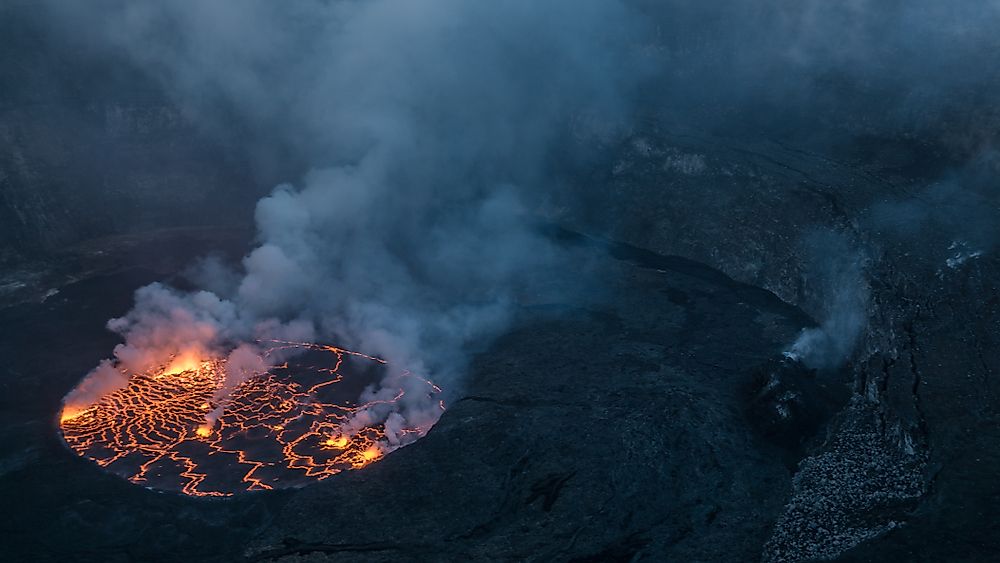Where Is The World's Largest Lava Lake?

Lava lakes are large amounts of liquefied molten lava, usually basaltic in nature, which may be partially or totally solid. When completely solid, lava lakes are sometimes referred to as frozen lava lakes. The lava lake at Mount Nyiragongo, which is located in the Democratic Republic of the Congo (DRC), is generally considered to be largest lava lake in recent history. Its depth varies depending upon the occurrence of volcanic eruptions but is believed to have reached a maximum depth of 10,660 ft in 1977 following a massive eruption. More recently, however, the lava lake at Mount Nyiragongo has a recorded depth of approximately 8,900 ft.
Mount Nyiragongo's Lava Lake
The world’s largest lava lake at Mount Nyiragongo is located in the Democratic Republic of Congo (DRC). More specifically, the lake is located inside Virunga National Park, approximately twelve miles north of the town of Goma. Mount Nyiragongo is an active stratovolcano that is part of the Virunga Mountains, which is part of the larger Albertine Rift that encompasses parts of the Democratic Republic of the Congo, Uganda, Rwanda, Burundi, and Tanzania. The area contains seven other volcanoes, one of which is also active. Nyiragongo means "smoking mountain" in the local language, which is appropriate given that the naturally formed volcanic mountain is considered Africa’s most active volcano.
As an active volcano that contains the world's largest permanent lava lake, Mount Nyiragongo has become an unique destination for travelers and hikers. The volcano is characterized by its symmetrical cone and large pool of reddish colored liquid lava. Classified as a stratovolcano, Mount Nyiragongo is composed of various layers of solidified lava and other volcanic materials such as ash, tephra, and pumice. The African volcano rises to a height of 11,380 ft and its major crater measures more than a mile wide and contains a pair of structures known as lava benches.
Eruptions
Since 1882 Mount Nyiragongo has erupted a minimum of 34 times. On January 10, 1977, due to a weakening of the lava lake's crater walls, large amounts of molten lava flowed down to the village below. The lava streams reached record speeds of 40 miles per hour, and within 30 minutes the entire lava lake had been emptied, resulting in the deaths of 70 residents in nearby villages. In response to the deadly eruption, in 1991 Mount Nyiragongo was designated as one of sixteen Decade Volcanoes by the International Association of Volcanology and Chemistry of the Earth's Interior (IAVCEA). This distinction is given to volcanoes that should be studied further because of the significant threats they pose to nearby local populations.
Other eruptions were reported in 1982–1983 and 1994. Another major eruption occurred on January 17, 2002, when Mount Nyiragongo's volcano triggered the release of lethal amounts of carbon dioxide and methane, as well as sparking a number of accompanying earthquakes. Despite 400,000 local inhabitants being placed under an evacuation order, a total of 245 deaths were reported. Additionally, another 120,000 residents were left homeless after 4,500 buildings were destroyed, either by lava or earthquake activity.
Since Mount Nyiragongo is considered to be an ongoing threat to local communities, the volcano is closely monitored for volcanic activity by scientists at the Goma Volcanic Observatory. Every ten minutes the volcano’s temperature is checked and once every four minutes seismic data is collected. These efforts are aimed at preventing further destruction and deaths.











